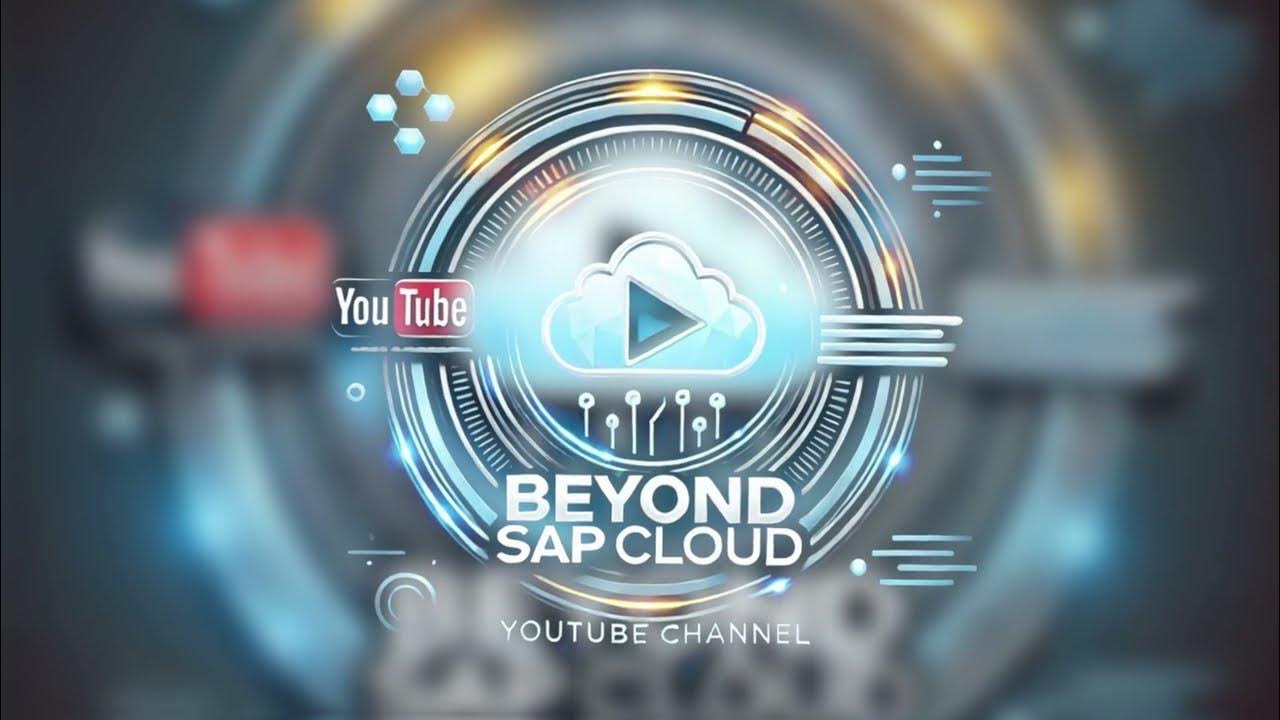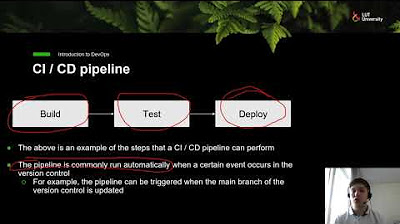Top 5 Most-Used Deployment Strategies
Summary
TLDRIn this video, we explore five deployment strategies used to release code into production. From the fast and risky Big Bang Deployment to the more controlled Rolling Deployment, we cover Blue-Green, Canary, and Feature Toggle strategies that help balance risk, control, and user experience. Each method is explained with its advantages, challenges, and practical use cases, offering insights for developers looking to optimize their deployment processes. Whether you’re a beginner or an experienced engineer, this video helps you choose the best approach based on your application’s needs.
Takeaways
- 😀 Big Bang Deployment pushes all changes at once, causing temporary downtime; careful preparation and testing are crucial.
- 😀 Rolling Deployment updates the system gradually, minimizing downtime and reducing the risk of widespread issues, but it can be slower.
- 😀 Rolling Deployment doesn't support targeted rollouts, meaning all users will eventually receive the new version.
- 😀 Blue-Green Deployment allows for seamless transitions between two identical environments, reducing downtime and making rollbacks easy.
- 😀 The Blue-Green method is resource-intensive, requiring two parallel environments, which can add complexity and increase infrastructure needs.
- 😀 Canary Deployment targets a small subset of users or servers to test a new version before a full rollout, providing control and safety.
- 😀 Canary Deployment offers the advantage of targeting specific users based on criteria like location or device type, which is not possible with other methods.
- 😀 Feature Toggle allows new features to be controlled and selectively released, making it perfect for A/B testing and gradual feature rollouts.
- 😀 Feature Toggles, if not properly managed, can lead to 'toggle debt,' which complicates maintenance and testing of the system.
- 😀 Choosing the best deployment strategy depends on the specific characteristics of the application and the needs of the users.
Q & A
What is Big Bang Deployment?
-Big Bang Deployment involves pushing all changes to production at once, often causing brief downtime. It is like ripping off a band-aid, but it can be risky if things go wrong, requiring a solid rollback plan.
What are the main risks of Big Bang Deployment?
-The main risks are the potential for downtime, user disruption, and data issues. If the deployment fails, rolling back might also cause disruptions.
How does Rolling Deployment differ from Big Bang Deployment?
-Rolling Deployment updates the system incrementally, one server at a time, to avoid downtime, unlike Big Bang which pushes all changes at once. It’s slower but reduces the risk of widespread issues.
What are the advantages of Rolling Deployment?
-Rolling Deployment prevents downtime, allows early detection of issues, and reduces the risk of system-wide problems, as it updates servers gradually.
What is the main challenge with Rolling Deployment?
-The main challenge with Rolling Deployment is that it is a slower process, and issues might still propagate if they aren’t caught early. Additionally, there is no control over which users get the new version.
What is Blue-Green Deployment?
-Blue-Green Deployment involves maintaining two identical production environments (blue and green). One environment is active (blue), while the other (green) is used to test and deploy the new version. Traffic is switched from blue to green once the new version is ready.
What are the key benefits of Blue-Green Deployment?
-Blue-Green Deployment ensures zero downtime, allows for seamless transitions, and provides easy rollback by switching between the two environments.
What challenges come with Blue-Green Deployment?
-The challenges include maintaining two parallel environments, which is resource-intensive and adds complexity. Managing data synchronization and infrastructure can also be complicated.
What is Canary Deployment and how does it work?
-Canary Deployment involves rolling out the new version to a small subset of servers or users, often selected based on specific criteria like location or device type. This allows for testing before full deployment. If issues arise, the deployment can be halted without affecting most users.
How does Canary Deployment ensure safety during the rollout?
-Canary Deployment offers safety by deploying the new version only to a small group of users or servers, providing an opportunity to monitor performance and fix issues before the full-scale rollout.
What are the challenges associated with Canary Deployment?
-Canary Deployment requires detailed monitoring and robust infrastructure management. It can also be complex when dealing with database schema changes or API compatibility.
How does Feature Toggle enhance deployment strategies?
-Feature Toggle allows for controlling specific new features within the application by turning them on or off for selected users. It enables targeted user testing and gradual feature rollouts.
What risks or challenges are associated with Feature Toggles?
-Feature Toggles can add complexity to the codebase, especially if not properly managed. Unused or obsolete toggles, known as 'toggle debt', can make the system harder to maintain.
Can Feature Toggle be used with other deployment strategies?
-Yes, Feature Toggle can be combined with strategies like Canary Deployment or Rolling Deployment to manage features on a smaller scale or direct specific users to test new features.
What is the primary advantage of using Blue-Green Deployment?
-The primary advantage is that it provides high control with zero downtime and an easy rollback process, making it ideal for applications requiring smooth user transitions and minimal risk.
When would you use Rolling Deployment over Big Bang Deployment?
-Rolling Deployment is preferable when you want to minimize downtime and reduce risk by updating incrementally. It is better for larger, complex systems, whereas Big Bang Deployment might be used for specific cases like intricate database upgrades.
Outlines

هذا القسم متوفر فقط للمشتركين. يرجى الترقية للوصول إلى هذه الميزة.
قم بالترقية الآنMindmap

هذا القسم متوفر فقط للمشتركين. يرجى الترقية للوصول إلى هذه الميزة.
قم بالترقية الآنKeywords

هذا القسم متوفر فقط للمشتركين. يرجى الترقية للوصول إلى هذه الميزة.
قم بالترقية الآنHighlights

هذا القسم متوفر فقط للمشتركين. يرجى الترقية للوصول إلى هذه الميزة.
قم بالترقية الآنTranscripts

هذا القسم متوفر فقط للمشتركين. يرجى الترقية للوصول إلى هذه الميزة.
قم بالترقية الآنتصفح المزيد من مقاطع الفيديو ذات الصلة

Episode 33: DevOps in BTP with CI/CD and cTMS service

CI/CD Pipeline Explained in 5 Minutes

Application Monitoring 101: How to Configure Sentry (3 of 6)

CI/CD Explained: The DevOps Skill That Makes You 10x More Valuable

Introduction to DevOps - CI / CD

AWS re:Invent 2020: Detect machine learning (ML) model drift in production
5.0 / 5 (0 votes)
